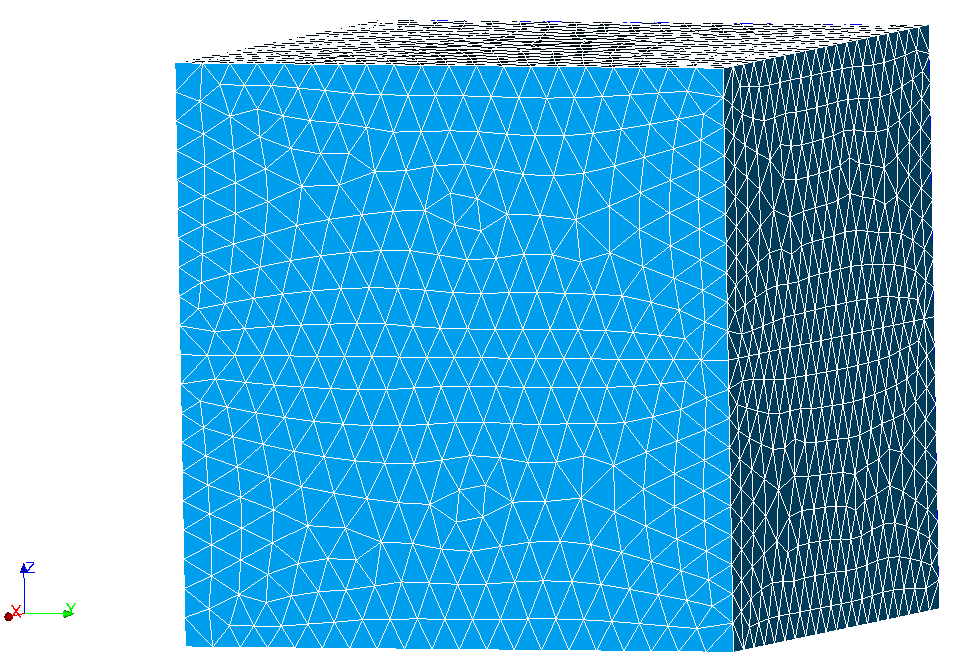3. Modeling B: crack X- FEM#
In this modeling, the crack is no longer meshed, but it is represented by level sets: \(\mathit{LSN}\mathrm{=}z\mathrm{-}1\mathrm{/}2\) and \(\mathit{LST}\mathrm{=}\mathrm{-}y\mathrm{-}x\mathrm{/}2+1\).
3.1. Characteristics of the mesh#
The structure is modelled by a mesh composed of 15872 tetrahedra (see [Figure 2.1-a]).

Figure 2.1-a: Healthy mesh
3.2. Tested sizes and results#
The values of \(\mathit{K1}\) are tested on the second point and on the last three points of the crack bottom. Indeed, the orientation of the crack implies that \(\mathit{K1}\) cannot be calculated on certain points. We test the points concerned to verify that Code_Aster assigns them the value of the nearest neighbor node or the calculation of \(\mathit{K1}\) could be performed.
Identification |
Reference Type |
Reference Value |
Point 2 |
“NON_REGRESSION” |
1324885.20838 |
Dot 22 |
“NON_REGRESSION” |
851382.586304 |
Dot 23 |
“NON_REGRESSION” |
851382.586304 |
Dot 24 |
“NON_REGRESSION” |
851382.586304 |
We also test the values of \(\mathit{COOR}\text{\_}X\), \(\mathit{COOR}\text{\_}Y\), \(\mathit{COOR}\text{\_}Z\), \(\mathit{TEMP}\) and \(\mathit{NEUT}1\) at node 1 in order to verify that these components are indeed present in the output table for the case X- FEM.